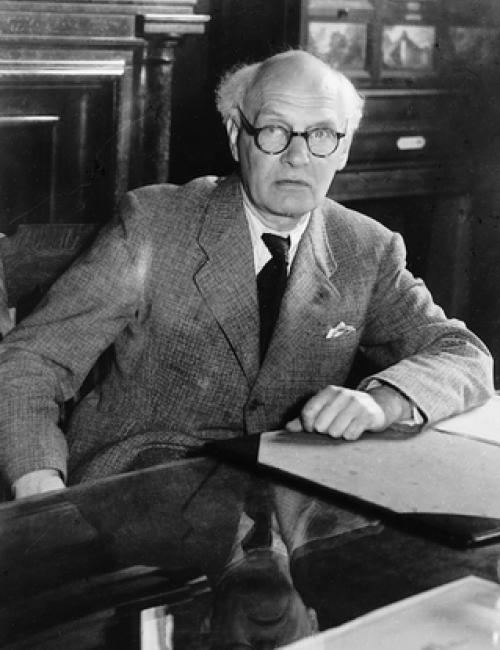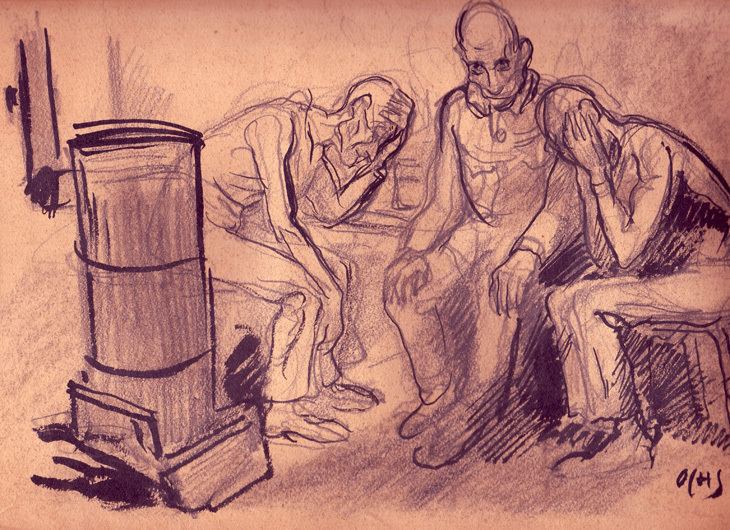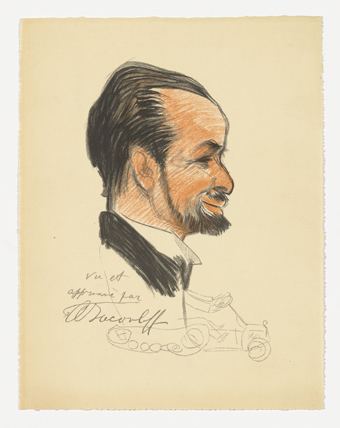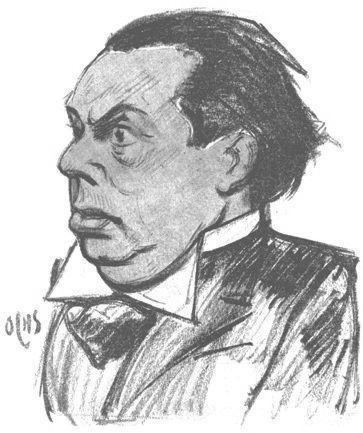Name Jacques Ochs | ||
 | ||
Olympic medals Fencing at the 1912 Summer Olympics – Men's team epee People also search for Henri Anspach, Paul Anspach | ||
Jacques Ochs (18 February 1883 – 3 April 1971), was a Jewish Belgian artist and epee and foil fencer.
Contents
- Early years and art study
- Fencing career
- Art and caricature
- Arrest and Internment
- After World War II
- Death
- References

Early years, and art study
Ochs was Jewish, and was born in Nice, France. His family moved to Liege, Belgium, in 1893. Ochs studied art there at the Royal Academy of Art in Liege, graduating 1903. He won the Donnay Prize that year. Afterwards, he continued his studies at the Academie Julian in Paris until 1905.
Ochs volunteered for the army in World War I, and was seriously injured in an air attack.

In 1920 he became a professor of painting at the Academie Royale des Beaux-Arts in Liege, and in 1934 he was appointed Director of the city's Musee des Beaux Arts.
Fencing career
In addition to being a gifted artist, he was an Olympic fencing champion.
He was Champion of Belgium in fencing in 1912.

Ochs was a member of the Belgian fencing team at the 1912 Stockholm Olympics, and won a gold medal in the team epee event (his teammates included Gaston Salmon). Ochs also competed in 3 individual events. In the individual foil and individual epee, he reached the 2nd round before being eliminated (he finished 39th in foil, and 29th in epee. Ochs's final event was individual sabre, but he was eliminated in the 1st round.
Art and caricature
He was also a caricaturist, who published his sketches, illustrations, and caricatures in various newspapers including the French daily, Le Figaro, and a satirical magazine published in Brussels called Pourquoi Pas? (Why Not?). He at the same time worked at the newspapers "Newspaper of Liege", "Small Parisian", and "the Belgian Nation."
Arrest and Internment
In early April 1938, Ochs, who was himself Jewish, depicted Hitler on the cover of Pourquoi Pas? with a swastika on his head and a sceptre in the form of a headless Jew. An artist with right-wing tendencies who envied Ochs' success informed on him, and Ochs was arrested at the academy in Liege on 17 November 1940.
A month later, on 17 December, Ochs was imprisoned in the Breendonk camp, to the south of Antwerp on the Brussels-Antwerp highway. The camp's prisoners suffered starvation, grass eating, tortures, hangings, and shootings. [1] Since 20 September, Breendonk had been used as a police internment camp holding mostly political prisoners and foreign Jews before their transport to Germany. Ochs used caricature to document the life there, drawing portraits of his fellow inmates on paper. When the commandant, Sturmbannfuhrer Philipp Schmitt, who was very proud of "his" camp, became aware of Ochs' artistic talents, he ordered him to make him drawings of the camp and its inmates – a gallery of victims. Among them was a portrait of Antwerp's shochet (Jewish ritual slaughterer). Immediately after his arrival, Breziner's hair had been shaved off, and he looked humiliated.
Ochs was obliged to obey the demands of the SS, but tried to ease the suffering of his fellow inmates. He would drag out their portrait "sittings" to provide them with as much rest as possible. Professor Paul Levy, who today serves as the president of the Memorial National du Fort de Breendonk, and was interned with Ochs, has said that although the inmates did not have mirrors, they knew what they looked like through Ochs' works.
A Flemish SS man who had known Ochs previously succeeded in smuggling him out of the camp in February 1942. This same man was also able to smuggle out some of the drawings Ochs had made for Commandant Schmitt.
In 1944 Ochs was re-arrested and interned again, along with his sister, in Mechelen transit camp. He continued to draw and managed to avoid deportation through a "medical" opinion confirming he had been baptised as a Protestant, and so could not be Jewish. He was liberated from the camp by the British forces.
After World War II
Only a small number of the characters he drew survived. After the war, Ochs used his drawings to reconstruct scenes from the camp. He published these in 1947, in a book called Breendonck – Bagnards et Bourreaux [Breendonck – Slave Laborers and Hangmen].
SS-Sturmbannfuhrer Schmitt, the commandant of Breedonck camp and, later, of Mechelen transit camp, was tried in Antwerpen in 1950 and sentenced to death. He was the only SS man sentenced in Belgium, and his was the last execution before the country abolished the death penalty.
After the war Ochs returned to work as a lecturer in the Royal Academy of Fine Arts, and even though his sight had been damaged during his internment, he continued to paint and draw. In 1948 he became a member of the Academie Royale des Sciences, des Lettres et des Arts de Belgique [The Royal Academy of Science, Literature and Art in Belgium] and a member of the Commission d'Achat des Musees Royaux d'Art Moderne [Acquisitions Commission of the Royal Museums of Modern Art].
He exhibited in many exhibitions, among them group exhibitions of the "Circle of Fine Arts", and a retrospective exhibition was also held for him. Ochs received many awards in recognition of his artistic talents, among them a gold medal at the second Biennale in Menton [Medaille d'or de la deuxieme Biennale de Menton] in 1953, and a gold medal for art, science and letters in Paris [Medaille d'or des Arts, Sciences et Lettres, Paris] in 1959.
Death
Ochs died in Liege in 1971, 88 years old.
A number of his drawings from Mechelen were donated to the art collection of Beit Lohamei Haghetaot (the Ghetto Fighters' House Museum) by Irene Awret, who was interned with him in this camp.
